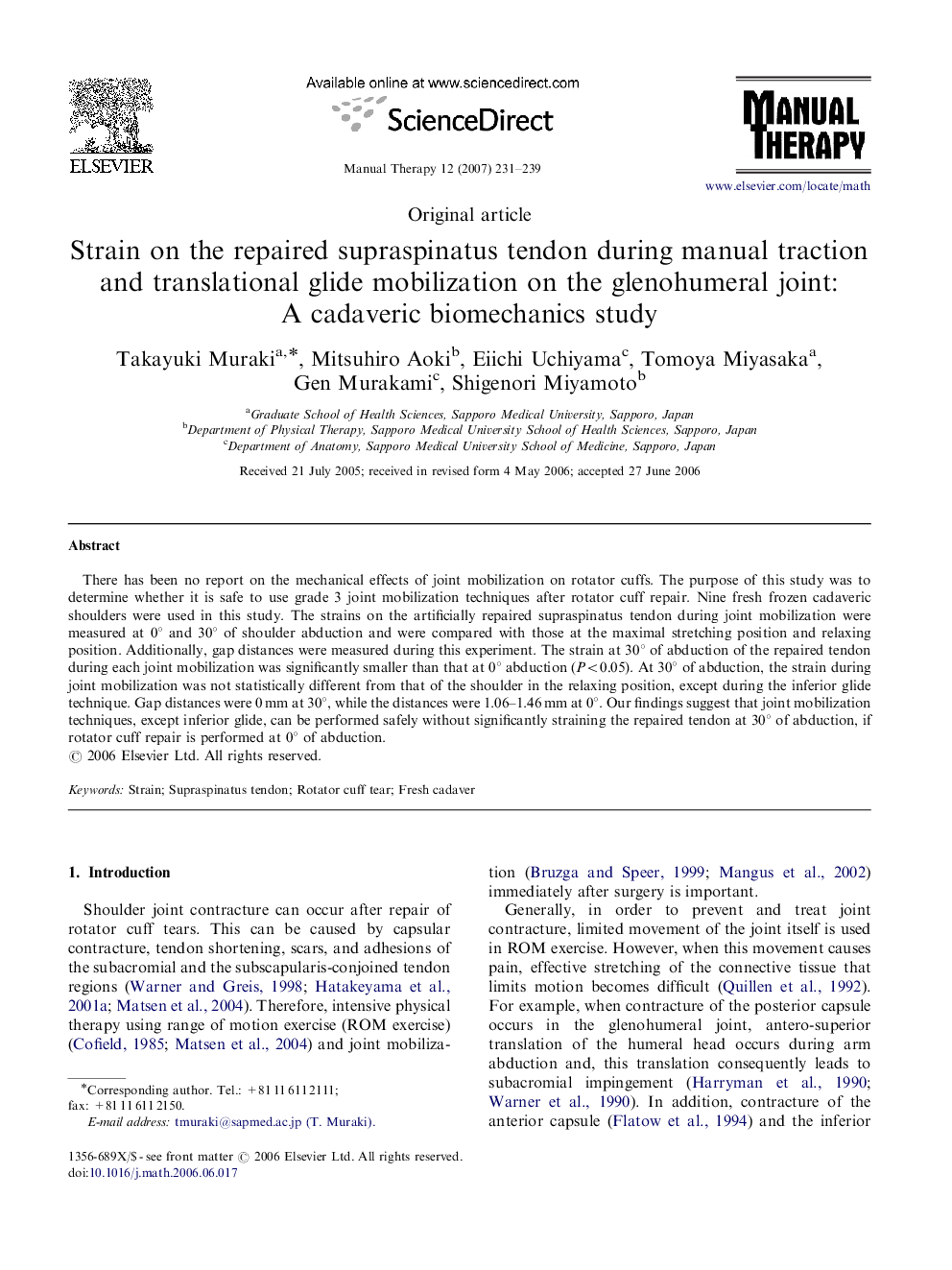| Article ID | Journal | Published Year | Pages | File Type |
|---|---|---|---|---|
| 2626108 | Manual Therapy | 2007 | 9 Pages |
There has been no report on the mechanical effects of joint mobilization on rotator cuffs. The purpose of this study was to determine whether it is safe to use grade 3 joint mobilization techniques after rotator cuff repair. Nine fresh frozen cadaveric shoulders were used in this study. The strains on the artificially repaired supraspinatus tendon during joint mobilization were measured at 0° and 30° of shoulder abduction and were compared with those at the maximal stretching position and relaxing position. Additionally, gap distances were measured during this experiment. The strain at 30° of abduction of the repaired tendon during each joint mobilization was significantly smaller than that at 0° abduction (P<0.05P<0.05). At 30° of abduction, the strain during joint mobilization was not statistically different from that of the shoulder in the relaxing position, except during the inferior glide technique. Gap distances were 0 mm at 30°, while the distances were 1.06–1.46 mm at 0°. Our findings suggest that joint mobilization techniques, except inferior glide, can be performed safely without significantly straining the repaired tendon at 30° of abduction, if rotator cuff repair is performed at 0° of abduction.
